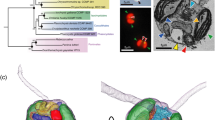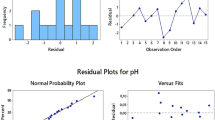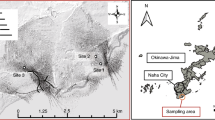Abstract
IN 1960 Kester and Foster1 demonstrated the conversion of certain liquid hydrocarbons to the corresponding alkanedioic acids in cultures of a Gram-positive bacterium. n-Alkanes possessing between 10 and 14 carbon atoms were shown to undergo this process of di-terminal oxidation. Evidence has been obtained2,3 that n-decanoic and 10-hydroxydecanoic acids are intermediates in the oxidation of n-decane to n-decanedioic acid.
This is a preview of subscription content, access via your institution
Access options
Subscribe to this journal
Receive 51 print issues and online access
$199.00 per year
only $3.90 per issue
Buy this article
- Purchase on SpringerLink
- Instant access to full article PDF
Prices may be subject to local taxes which are calculated during checkout
Similar content being viewed by others
References
Kester, A. S., and Foster, J. W., Bact. Proc., 168 (1960).
Kester, A. S., Dissertation Abstr., 22, 3350 (1962).
Foster, J. W., in The Oxygenases, edit. by Hayaishi, O. (Academic Press, New York) (in the press).
Author information
Authors and Affiliations
Rights and permissions
About this article
Cite this article
ALI KHAN, M., HALL, A. & ROBINSON, D. Microbial Transformation of n-Octane into Dicarboxylic Acids. Nature 198, 289 (1963). https://doi.org/10.1038/198289a0
Issue date:
DOI: https://doi.org/10.1038/198289a0
This article is cited by
-
Microbiological Oxidation of Cyclic Ketones
Nature (1966)
-
Oxidation of selected alkanes and related compounds by aPseudomonas strain
Antonie van Leeuwenhoek (1964)
-
Products of the oxidation of selected alkanes by a gram-negative bacterium
Antonie van Leeuwenhoek (1964)



